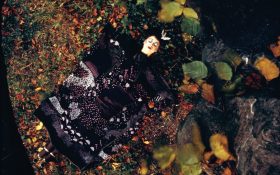The Final Report of The Scottish Executive’s Cultural Commission, in June 2005, included a section entitled Planning & Partnership. This diagram, outlining the proposed CultureScotland.com website, is taken from that section of the report.
The report explained that “The basis of the implementation is collaborative cultural institutional support to develop CultureScotland.com as the definitive web service delivering cohesive support for a range of user needs.”
As you can see, CultureScotland.com is going to have much in common with the workings of a particularly complicated industrial process (as well as being verbally impenetrable). There’ll be Channel Repositories, Delivery Web Services and End User Interfaces all feeding through a tangle of lines, arrows, Mondrian paintings, hexpave slabs and bullet-shaped lozenges to a Knowledge Capture Zone before arriving at a daringly curved Archive screen which, if twanged, may recede infinitely.
Two years down the line, we’re still waiting for it to come, as it were, on-line. Now Scotland’s latest Culture Minister, Linda Fabiani, has announced the country’s latest plans for culture, at Holyrood on 7th November. In a long-winded 15 minutes of fame, she pretended to be excited about diverse cultural activities, as long as they were Scottish. Key to the proposals is the merging of the Scottish Arts Council and Scottish Screen into a new body to be called Creative Scotland. There are no diagrams yet to explain the workings of this new creation, but she did say that it will have a mandate to “cultivate and support the best of Scottish arts and creativity…”. How the ‘best’ will be identified is left open for discussion, but there’s an implication that it may not address the issues of, or be properly inclusive of differing levels in the talent base.
Fabiani said “I believe that government should not arbitrate on artistic decisions. That is why Creative Scotland and artists themselves will have the freedom and power to determine their own creative direction.” I suppose it wasn’t her lot that lumbered Scotland with commissioned the new parliament buildings, involving considerable political intervention in both the design and muddy process of procurement, but the track record of politicians isn’t too good in this area.
To be fair, in December last year – before the SNP won power – their spokesman criticised the draft bill for implying too great an involvement by the government in the arts. The Green Party also had some harsh words, suggesting that the draft bill “tears up” the principle that arts funding decisions should be at arms-length from politicians. At present the SNP, now in a position to do something about it, seem to have stayed faithful to their stance of a year ago.
Richard Holloway is the chair of the joint board of the merging bodies. Skimming off the top of his random political phrase generator, he had this to say: “The formation of Creative Scotland offers us an unrivalled opportunity to place creativity at the heart of the nation’s life and we intend to rise to the challenge.” This sounds like a temporary softening of pain which, when the verbal paracetamol wears off, will return as they and we discover all over again that two into one don’t go. Of course it would be great to see it working but these things don’t always go smoothly. The best example of this is in government itself. Every now and then local government reinvents itself by merging authorities but the consequence is always a fight to the death between the various institutional empires built up over the previous decade or so. The preservation of territories, power and salaries always seem to take precedence over service.
Unsure of just how to paint this hybrid butterfly, a conference has been called in Edinburgh at the end of February, under the banner ‘Scotland: Creative Nation’. It’s being billed as a cultural summit, no less, and the idea is to do a lot of networking whilst endlessly ‘debating pertinent issues in the context of the development of Creative Scotland’. It’s going to be a riot! Got your tickets yet?
OK, so here’s the thing: Why must Government get involved at all? Answer: Because many cultural activities and organisations can’t survive without subsidy, or even with it (witness the very recent demise of the Skye Arts Centre despite heavy subsidy from the Scottish Arts Council).
Energy provision, which can be a very profitable enterprise, is much higher up the political agenda than culture and is now being sustainably developed by the private sector. In Scotland the ruling party colour themselves bright green and have ruled out the nuclear option already. It won’t happen here. Full stop.
So, let’s do some creative thinking.
Much has been made lately of the delays in getting Planning Approval for wind farms. There’s currently a log-jam of over 200 applications throughout Britain, about half of them in Scotland. As the Scottish Government has just signalled an imperative to support culture in all its guises, there has never been a better time to go cap in hand. All that Joe (art lover) Public would have to do is go straight to Creative Scotland and ask for the form headed “Application for Massive Grant”. Then fill this in with the CultureScotland.com website diagram used as supporting technical information, creatively referring to the proposal as a kinetic sculpture park. Could it be any easier? This way Britain may stand a chance of reaching its 20% renewable energy target by 2020 by paying for it through government and, as a valuable spin-off, bring culture to a hillside near you. Art in the public domain AND joined up government with synergy between departments. Now, that’s innovation!
What? You don’t think that wind farms are beautiful – that the turbines have a natural grace and that the mountains were always destined to accommodate them – that they represent the finest flowering of engineering excellence and give us a dramatic alternative to straight-line monoculture forestry to gaze upon? Ah well, that’s merely a subjective view.




